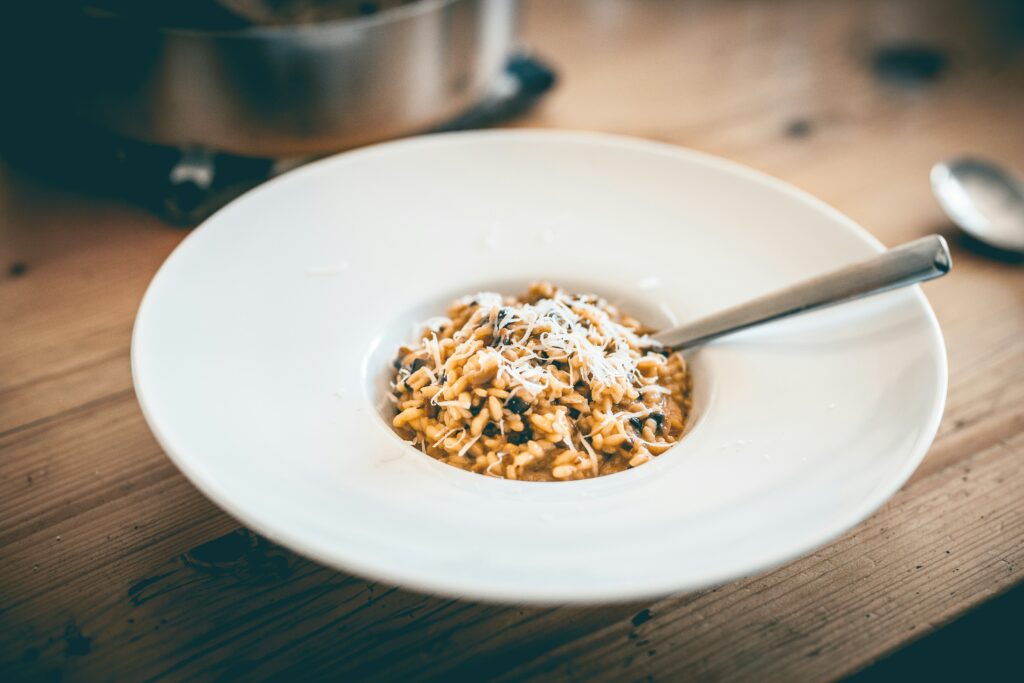A Food Fun Travel Guest Post
Madrid, Spain’s vibrant capital, is a city where the culinary scene is as lively as its nightlife. From traditional tapas bars to Michelin-starred restaurants, Madrid offers a gastronomic landscape that is as diverse as its cultural heritage. Whether it’s tasting the classic tortilla española or the less-known but equally delectable oreja a la plancha (grilled pig’s ear), each dish tells a story of culinary tradition and innovation. As you prepare to leave the bustling Plaza Mayor with its aroma of churros and chocolate, you board the Madrid to Barcelona train, ready to explore further the culinary marvels of Spain.
Upon arriving in Barcelona, the contrast in culinary style is immediately noticeable. The influence of the Mediterranean Sea is evident in the abundance of seafood dishes, such as esqueixada and suquet de peix, which highlight the freshness and quality of local ingredients. Barcelona’s streets, alive with the sounds of Catalan music and the sights of Gaudi’s architectural masterpieces, also buzz with the excitement of gastronomic discovery—from the bustling La Boqueria market to intimate tapas bars hidden in the Gothic Quarter.
Transitioning from Spain to Italy, the journey continues with a ride on the train from Florence to Rome. Florence, known as the cradle of the Renaissance, offers a feast that is as much a visual delight as a culinary one. Here, traditional Tuscan cuisine, characterized by its rustic simplicity and reliance on superb local produce, dominates the food scene. Dishes like ribollita and pappa al pomodoro showcase the flavors of the region in a way that’s both comforting and profoundly satisfying.

In Rome, the culinary tradition deepens with dishes that have been perfected over centuries. The Eternal City serves up classics like spaghetti alla carbonara and saltimbocca, all made with ingredients that embody the essence of Italian cooking. Rome’s historical layers are mirrored in its culinary offerings, where ancient techniques and modern innovations meet. The city not only captivates with its iconic landmarks but also with its ability to offer a slice of Italian heritage in every bite.
The journey through these cities is not merely a passage through geographical locations but a dive into the depths of culinary art that has evolved over centuries. Each city adds its own unique flavor to the Mediterranean culinary mosaic, making the experience as rich in taste as it is in culture.
As the train glides from Venice to Milan, the anticipation builds with every passing landscape. Venice, with its intricate network of canals and historic architecture, offers a culinary scene that mirrors its complex beauty. The city’s restaurants and bistros serve dishes like sarde in saor that capture the essence of Venetian cuisine with its sweet and sour flavors. The simplicity of this dish, featuring sardines marinated with onions, raisins, and pine nuts, reflects Venice’s historical trade connections and its mastery of blending diverse culinary influences.
Arriving in Milan, a fashion and design capital, marks a pivotal moment in our gastronomic adventure. Milan is not just an economic powerhouse; it’s also a culinary hub where tradition

meets innovation. Here, the past and the present merge into a vibrant food scene. The streets of Milan are lined with both historic cafes and modern eateries, offering everything from the traditional risotto alla Milanese to experimental dishes that push the boundaries of Italian cooking. Milanese pizzerias and gelaterias, often overlooked for their more famous southern counterparts, offer a taste of local flavors that delight both locals and visitors.
Beyond these dishes, Milan’s markets like the Mercato di Viale Papiniano, are bustling centers of culinary activity. These markets offer a palette of fresh produce, artisan cheeses, and quality meats that are the backbone of Milanese cuisine. Each stall, with its array of local and imported goods, provides the ingredients that Milanese chefs transform into sublime dishes.
As our culinary tour concludes, the experiences gathered from Madrid to Barcelona, Florence to Rome, and extending to Seville, Valencia, Venice, and Milan leave a lasting impression. This journey through some of the Mediterranean’s most celebrated cities has not just been a feast for the palate but also an enlightening exploration of cultural heritage and culinary artistry. Each city’s distinct flavors and dishes tell a story of their history, people, and landscapes, offering deeper insights into the Mediterranean way of life where food is celebrated as a central pillar of daily life and communal joy.
From the bustling train rides that connect these historical cities to the quiet moments savoring local delicacies, we’ve seen how traditional dishes are preserved and honored while new culinary trends set the stage for future gastronomic delights. The bustling markets filled with local produce in Rome, the quiet cafes in Florence, and the vibrant tapas bars in Barcelona each add a unique flavor to our understanding of Mediterranean cuisine.
In the end, the true essence of Mediterranean gastronomy lies in its ability to bring people together, creating moments of joy and shared experience that resonate well beyond the flavors on the plate. It’s a journey through time and taste that binds the old with the new, illustrating the dynamic and enduring spirit of the Mediterranean. Each bite not only offers a taste of regional specialties but also serves as a reminder of the rich tapestry of history, culture, and personal stories that make the Mediterranean culinary landscape profoundly beautiful and endlessly intriguing.




